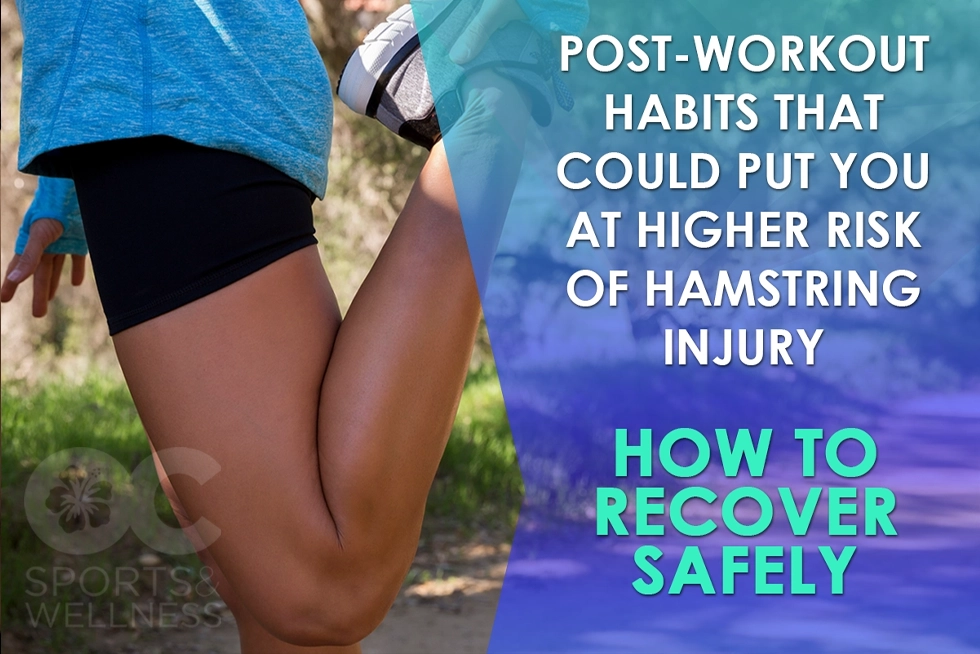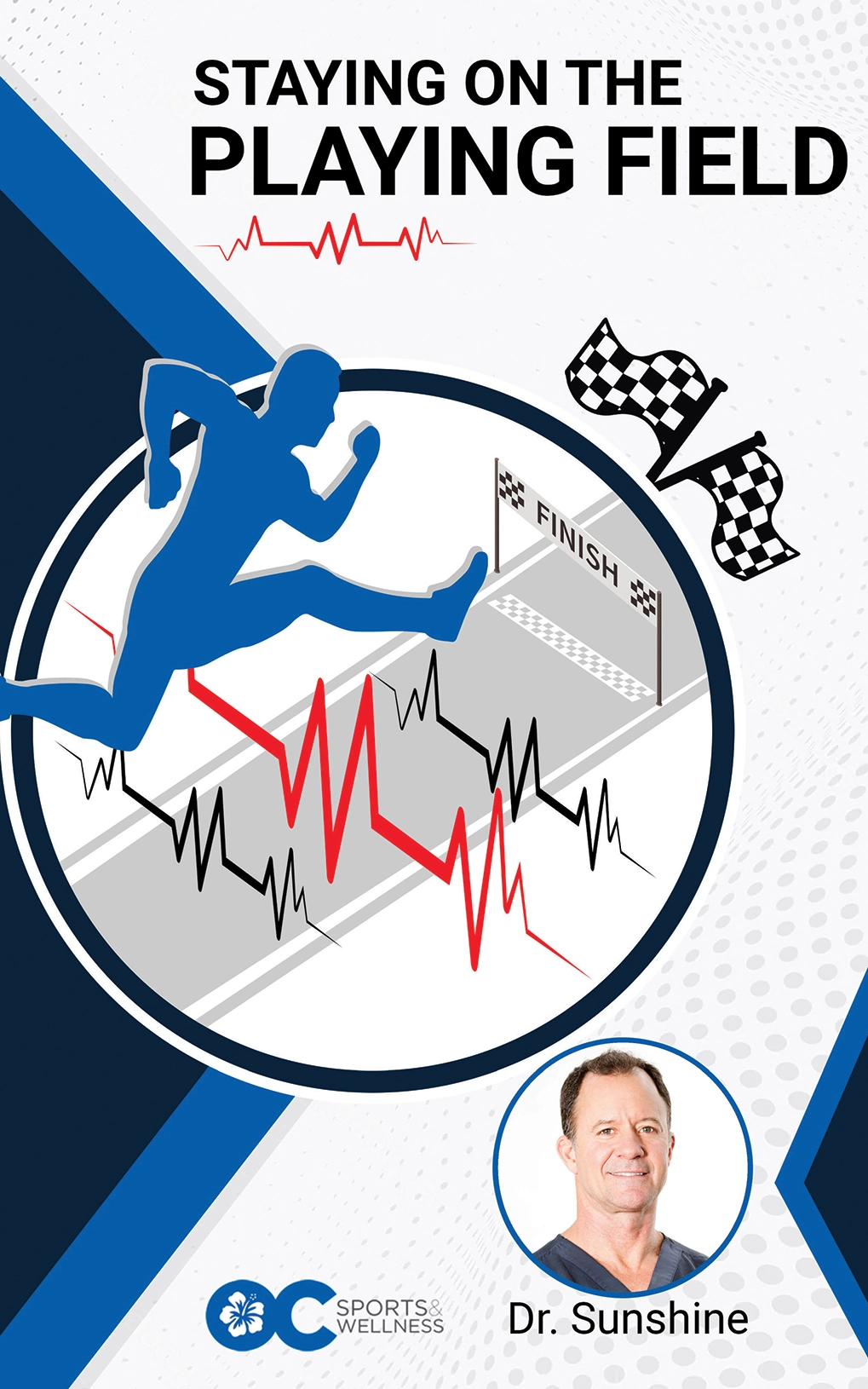Post-Workout Habits That Could Put You at Higher Risk of Hamstring Injury — and How to Recover Safely
Hamstring strains (the sudden pulls or tears in the muscles at the back of your thigh) are one of the most common and frustrating injuries for active people. They can happen during a sprint, a sudden lunge, or even when muscles are tired and not ready for the next challenge. The good news: many post-workout habits that raise your risk are simple to change, and wise recovery choices dramatically cut the chance of reinjury while helping you get back to what you love faster.
Why the focus on post-workout habits?
What you do after exercise matters. Your body is still recovering — muscle fibers need time, energy, and the right signals to repair and adapt. Poor choices right after training (or on rest days) can leave hamstrings weaker, stiffer, or under-repaired, which makes them more likely to fail the next time they’re asked to work hard. Clinical research indicates that proper recovery, progressive loading, and attention to warning signs can reduce the risk of reinjury and improve outcomes.
Common post-workout habits that increase hamstring risk
- Skipping a sensible cool-down or leaving muscles cold:
After high-intensity work, stopping abruptly and remaining still can leave muscles tight and less prepared for future stress. Not cooling down or engaging in light movement can reduce blood flow and increase stiffness. Gradual light movement or low-effort cycling/walking helps muscles clear metabolic byproducts and begin repair. - Pushing through pain or “toughing it out” after a twinge:
Ignoring a new pain in the back of the thigh and continuing heavy training is one of the single most significant contributors to more severe hamstring injury. Early pain or tightness is a warning sign — not a badge of toughness. Continuing to load an irritated muscle can convert a minor strain into a bigger tear. - Going hard again too soon (inadequate recovery between sessions):
Performing intense sprinting, heavy lifting, or long hill runs before your muscles have fully recovered increases your risk of injury. Recovery includes sleep, nutrition, hydration, and a gradual return to intensity. Sudden spikes in training load are a common cause of hamstring problems. - Relying only on passive recovery (ice, foam rolling) but skipping strength work:
While ice, compression, and gentle massage can help alleviate symptoms, they don’t address the underlying weakness or muscle-length changes that make a hamstring prone to reinjury. Programs that include progressive strengthening (especially eccentric strengthening) lower future injury rates. - Overdoing static stretching as your only strategy:
Long static stretches after every workout, used alone, don’t reliably prevent hamstring injuries and can give a false sense of security. Flexibility has a role, but it’s only one piece of the puzzle. Current evidence suggests that stretching alone is insufficient to protect the hamstrings. - Neglecting balanced strength — especially eccentric strength:
Hamstrings often fail when they are lengthening under load (an eccentric action). If your training lacks controlled eccentric strengthening or if the hamstring-to-quadriceps strength ratio is poor, your risk increases. Exercises that teach the muscle to control lengthening load are protective. - Poor sleep, low energy intake, or dehydration after training:
Muscles repair when you rest and provide them with nutrients. Skimping on sleep, calories, or not rehydrating slows recovery and leaves muscle fibers vulnerable to overload the next time you train.
Recovery-focused habits that protect your hamstrings (plain language)
If you’ve had a hamstring problem before, or you want to reduce your risk, try building these simple, evidence-based habits into your post-workout routine:
- Cool down with movement: Finish a challenging workout with 5–10 minutes of light walking, gentle cycling, or mobility exercises that keep your legs moving. This helps clear waste products and reduces stiffness.
- Respect early warning signs: If the back of your thigh feels sharper than normal soreness — tight, pulsing, or unexpectedly tender — stop high-speed or heavy work for a few days and lower the intensity. Seek medical review if pain persists. Continuing to train despite new hamstring pain is a significant cause of more severe injuries.
- Use recovery tools wisely: Ice, compression, and gentle self-massage can reduce pain after a strain, but they’re an adjunct — not a cure. Pair them with gradual, targeted loading to restore strength and function.
- Progress strength gradually — include eccentric work: Exercises that train the hamstrings to control lengthening (for example, slowly resisting as the muscle straightens under load) are protective. Research shows that eccentric strengthening programs can substantially reduce hamstring injuries.
- Don’t rely on stretching alone: Gentle mobility work is fine, but prioritize progressive strength and controlled exposure to the speeds and movements your sport or activity requires. Static stretching alone has limited ability to prevent hamstring problems.
- Restore sleep, hydrate, and feed recovery: Aim for consistent sleep and provide a balanced post-workout snack or meal that includes protein and carbohydrates. Recovery nutrition is crucial for muscle repair and reducing the risk of reinjury.
- Plan a gradual return to full intensity: After any hamstring pain or injury, increase speed, load, and complexity in a step-by-step manner. A measured return lowers the chance of reinjury versus jumping back to full intensity too quickly.
When you’ve already had a hamstring injury — special considerations
Having had a hamstring strain makes you more likely to have another one unless recovery addresses the root causes. Key points to protect yourself:
- Follow a staged plan: Rebuilding strength and progressively exposing the hamstring to speed and lengthening loads is essential. A staged plan reduces recurrence risk.
- Watch the load: Avoid sudden increases in training volume or intensity. “Spikes” in load are a common reason for reinjury.
- Address weakness, not just pain relief: Temporary symptom relief (e.g., ice or rest) is helpful, but the long-term fix is restoring muscle capacity at the speeds and lengths used in your sport or daily life.
Practical, everyday checklist you can use after workouts
Use this short checklist to keep your hamstrings safer:
- Finish with light movement for 5–10 minutes (cool-down).
- Rehydrate and eat a recovery snack within 60–90 minutes.
- Check for abnormal pain — if it’s more than mild soreness, reduce intensity and get checked.
- Include at least one session per week of controlled eccentric hamstring work (or as advised by Dr. Sunshine).
- Sleep well — aim for consistent, quality sleep each night.
- Avoid sudden jumps in training load; increase volume/intensity gradually.
How OC Sports and Wellness can help
At OC Sports and Wellness — the premier sports medicine clinic in Orange County — our team specializes in diagnosing hamstring injuries, developing safe return-to-activity plans, and helping you establish recovery habits that reduce the risk of reinjury. We focus on the medical care and practical recovery steps that get you back to life and sport safely, without overemphasizing treatments we don’t provide. Suppose you’ve had a hamstring pull or you’re worried because of recurring tightness. In that case, Dr. Sunshine can assess your injury, outline a staged recovery plan, and show you the key exercises and precautions to follow.
When to seek medical attention
Contact Dr. Sunshine promptly if you experience:
- Sudden, sharp pain in the back of the thigh during activity.
- Inability to walk or bear weight soon after the injury.
- Excessive swelling, bruising, or rapidly increasing pain.
- Persistent weakness or tightness that doesn’t improve with a few days of rest and conservative care.
Uplifting note
Hamstring problems can be discouraging, but they are also one of the most manageable sports injuries when treated thoughtfully and effectively. Small, consistent post-workout habits — cooling down, listening to pain signals, prioritizing recovery sleep and nutrition, and adding specific strength work — add up to significant reductions in reinjury risk. With the right approach, you can recover fully and return stronger and more
We hope this information is helpful. At OC Sports and Wellness in Orange County, we understand the importance of balancing your health with a busy lifestyle. That’s why we offer convenient options for scheduling visits, texting, or video chatting with Dr. Sunshine. Let’s work together towards your well-being! Reach out to us at 949-460-9111.

Disclaimer: The information above is educational and not a substitute for personalized medical advice. Outcomes vary. Always consult a qualified healthcare professional to determine the best treatment for your condition.


